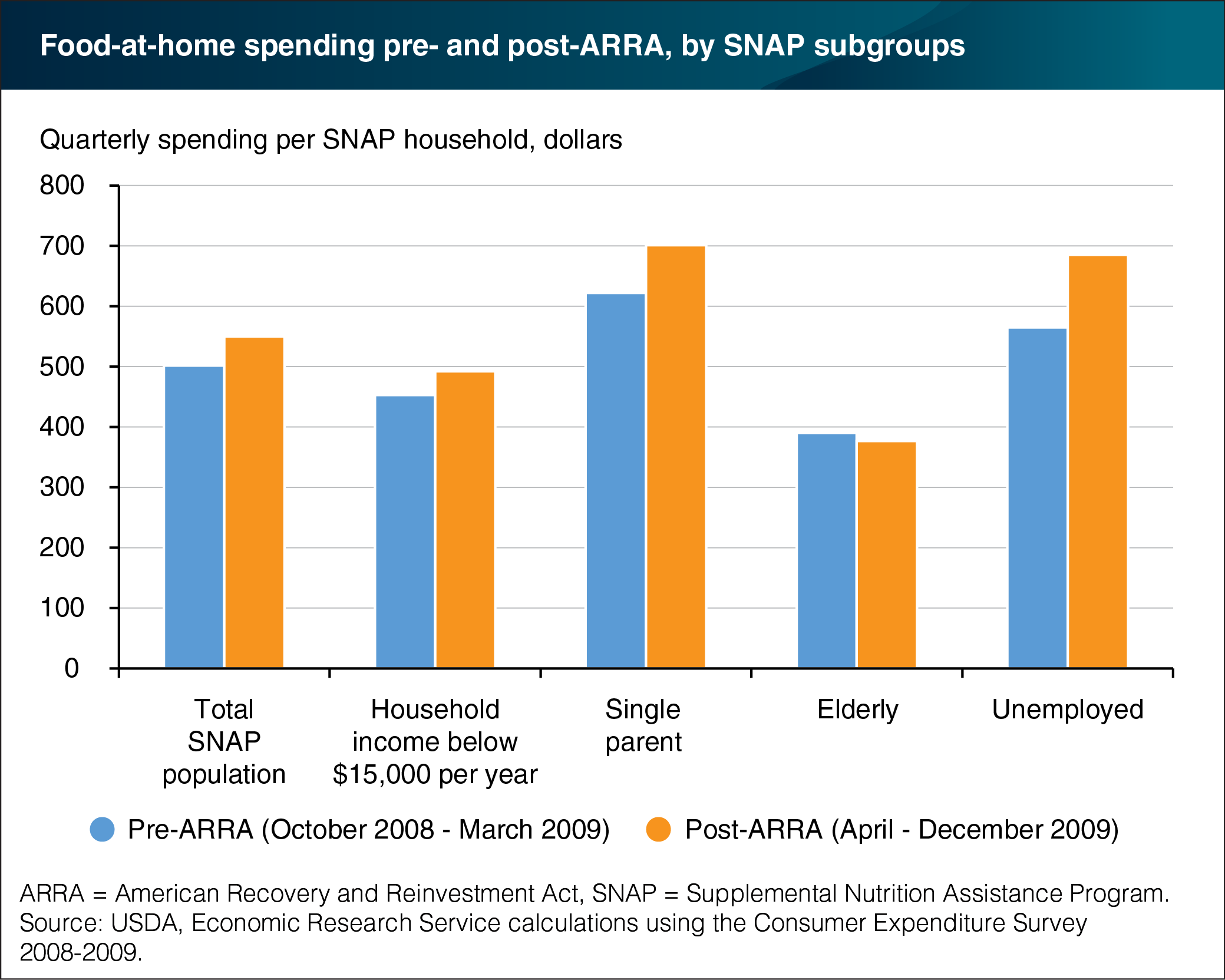2009 Stimulus Act boosted food spending of SNAP participants
- by Charlotte Tuttle
- 9/20/2016

The American Recovery and Reinvestment Act of 2009 (ARRA) was implemented to address the economic crisis following the 2007-09 recession. ARRA temporarily increased benefit levels in USDA’s Supplemental Nutrition Assistance Program (SNAP) and expanded SNAP eligibility for jobless adults without children. A recent ERS report examined the effects of this benefit increase on SNAP households’ food purchases in supermarkets, supercenters, and other food retailers (food at home). Quarterly food-at-home spending by SNAP households rose from an average of $502 per household over October 2008 to March 2009 to $550 after April 2009 when ARRA was implemented. SNAP households with incomes below $15,000 per year, single-parent SNAP households, and SNAP households with an unemployed member increased their food-at-home spending in response to the increased benefit levels. While SNAP benefits can only be used for at-home food purchases, additional benefits can free up cash spent on food for other purchases. The entire benefit increase is generally not spent on food. The ERS analysis found that, on average, SNAP households spent 53 percent of the 2009 ARRA increase on food and the rest on other household needs. This chart appears in the ERS report, The Stimulus Act of 2009 and Its Effect on Food-At-Home Spending by SNAP Participants, released on August 31, 2016.

